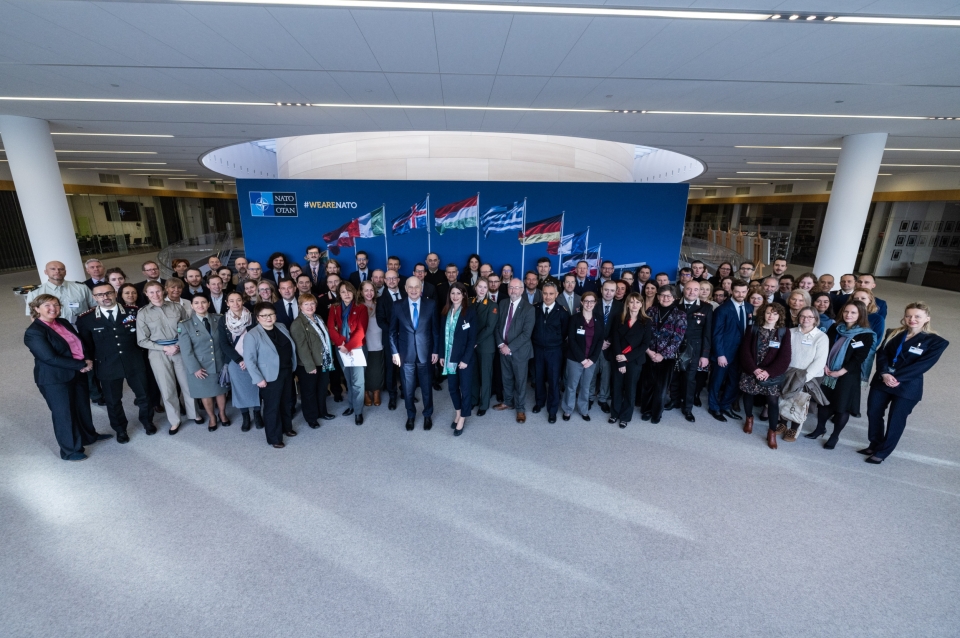February 24, 2023
A New Role for NATO in Conflict Zones?
One year after Russia's invasion of Ukraine, PIK Professor Lynn Meskell calls on the alliance to take a more expansive view of cultural property protection.

PIK Professor Lynn Meskell (8th from left in the front row) was among presenters at a February gathering of NATO officials and member-state delegations hosted by the Nordic Center for Cultural Heritage & Armed Conflict in Copenhagen.
Close
PIK Professor Lynn Meskell (8th from left in the front row) was among presenters at a February gathering of NATO officials and member-state delegations hosted by the Nordic Center for Cultural Heritage & Armed Conflict in Copenhagen.
“Simply referencing the 1954 Convention—the ideal of the Blue Shield [the symbol used on signs posted at World Heritage sites] that’s riddled with bullet holes—is not the way to go,” says PIK Professor Lynn Meskell.
A view of Mosul following attacks on the city by ISIS (Photo Gina Haney)

 View Slideshow
View Slideshow


